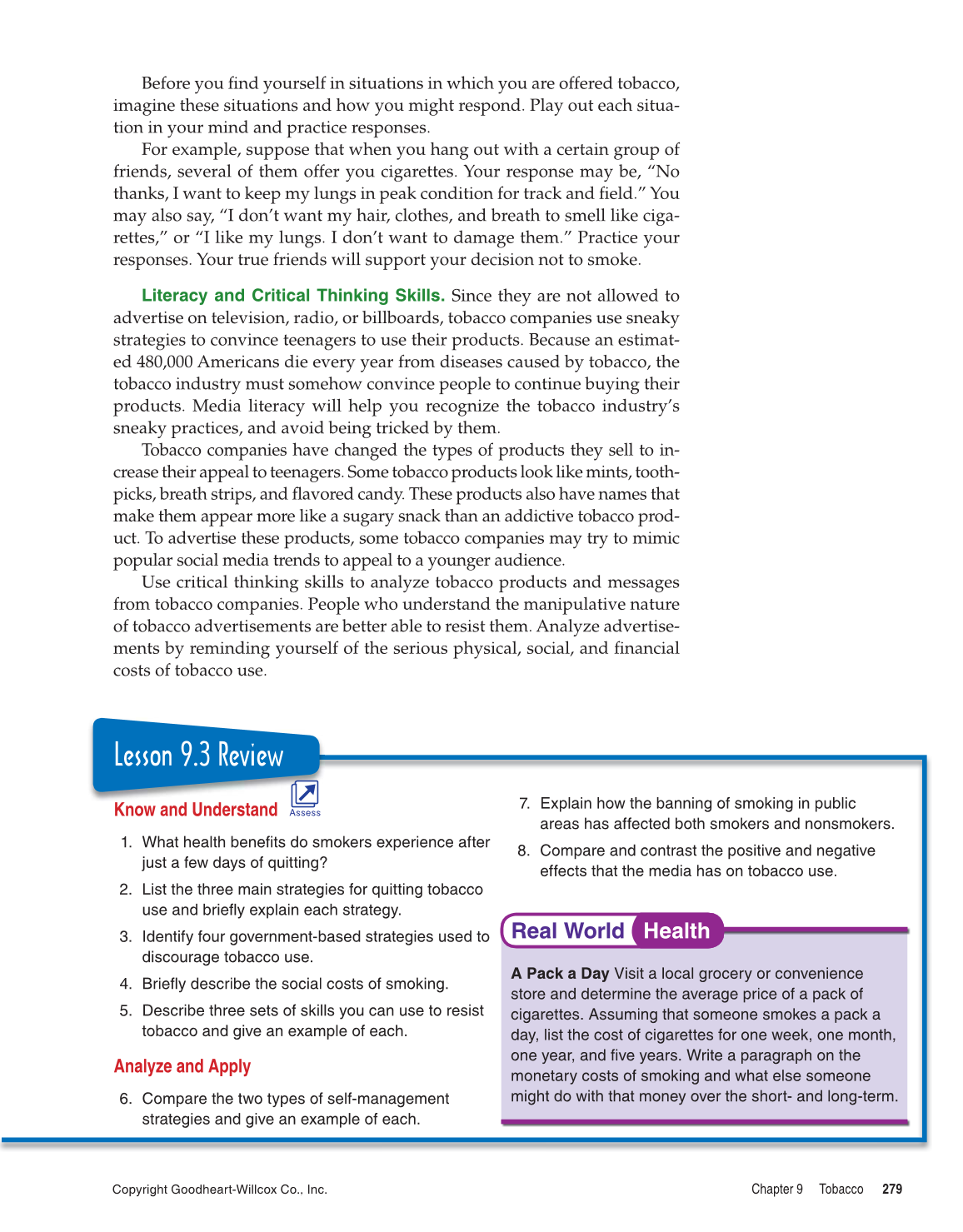Copyright Goodheart-Willcox Co., Inc.
Chapter 9 Tobacco 279
Before you fi nd yourself in situations in which you are offered tobacco,
imagine these situations and how you might respond. Play out each situa-
tion in your mind and practice responses.
For example, suppose that when you hang out with a certain group of
friends, several of them offer you cigarettes. Your response may be, “No
thanks, I want to keep my lungs in peak condition for track and fi eld.” You
may also say, “I don’t want my hair, clothes, and breath to smell like ciga-
rettes,” or “I like my lungs. I don’t want to damage them.” Practice your
responses. Your true friends will support your decision not to smoke.
Literacy and Critical Thinking Skills. Since they are not allowed to
advertise on television, radio, or billboards, tobacco companies use sneaky
strategies to convince teenagers to use their products. Because an estimat-
ed 480,000 Americans die every year from diseases caused by tobacco, the
tobacco industry must somehow convince people to continue buying their
products. Media literacy will help you recognize the tobacco industry’s
sneaky practices, and avoid being tricked by them.
Tobacco companies have changed the types of products they sell to in-
crease their appeal to teenagers. Some tobacco products look like mints, tooth-
picks, breath strips, and fl avored candy. These products also have names that
make them appear more like a sugary snack than an addictive tobacco prod-
uct. To advertise these products, some tobacco companies may try to mimic
popular social media trends to appeal to a younger audience.
Use critical thinking skills to analyze tobacco products and messages
from tobacco companies. People who understand the manipulative nature
of tobacco advertisements are better able to resist them. Analyze advertise-
ments by reminding yourself of the serious physical, social, and fi nancial
costs of tobacco use.
Lesson 9.3 Review
Know and Understand
1. What health benefi ts do smokers experience after
just a few days of quitting?
2. List the three main strategies for quitting tobacco
use and briefl y explain each strategy.
3. Identify four government-based strategies used to
discourage tobacco use.
4. Briefl y describe the social costs of smoking.
5. Describe three sets of skills you can use to resist
tobacco and give an example of each.
Analyze and Apply
6. Compare the two types of self-management
strategies and give an example of each.
A Pack a Day Visit a local grocery or convenience
store and determine the average price of a pack of
cigarettes. Assuming that someone smokes a pack a
day, list the cost of cigarettes for one week, one month,
one year, and fi ve years. Write a paragraph on the
monetary costs of smoking and what else someone
might do with that money over the short- and long-term.
Real World Health
7. Explain how the banning of smoking in public
areas has affected both smokers and nonsmokers.
8. Compare and contrast the positive and negative
effects that the media has on tobacco use.
Assess
